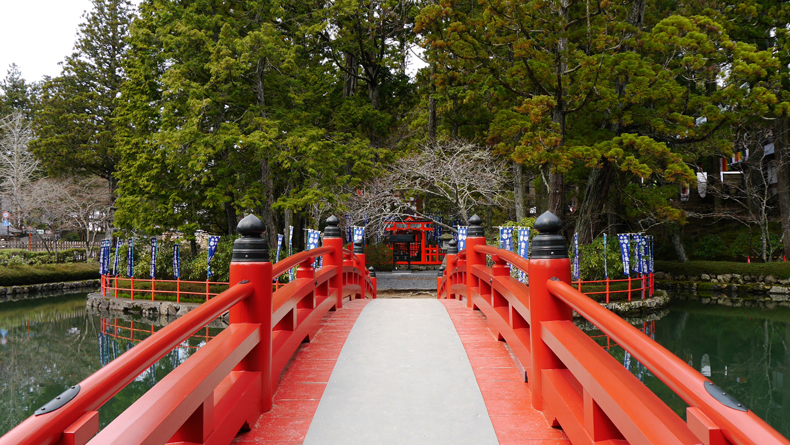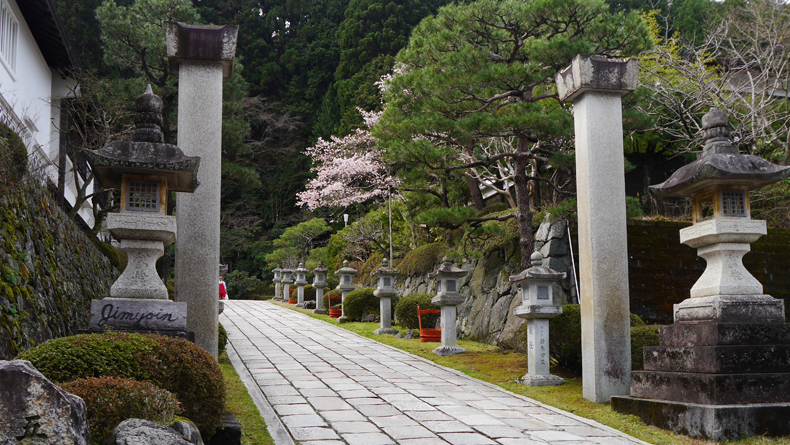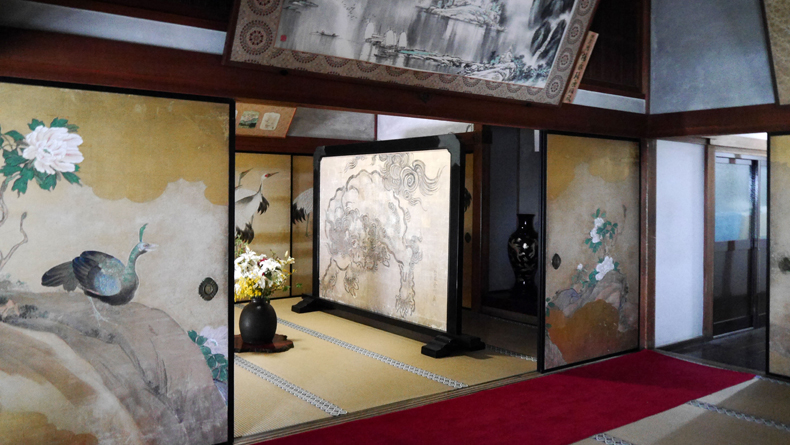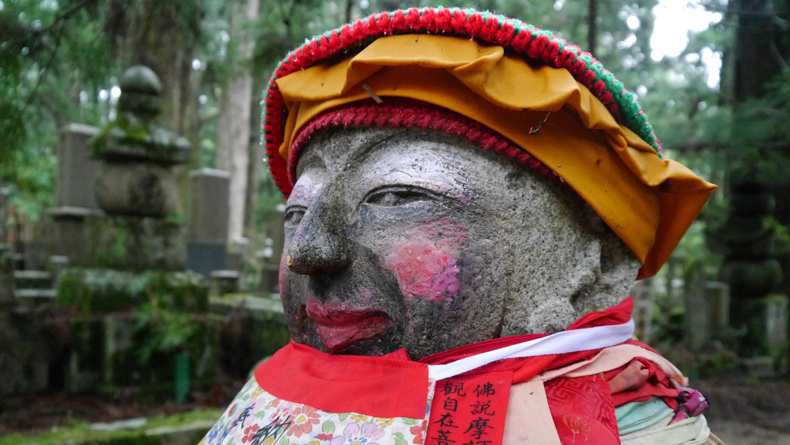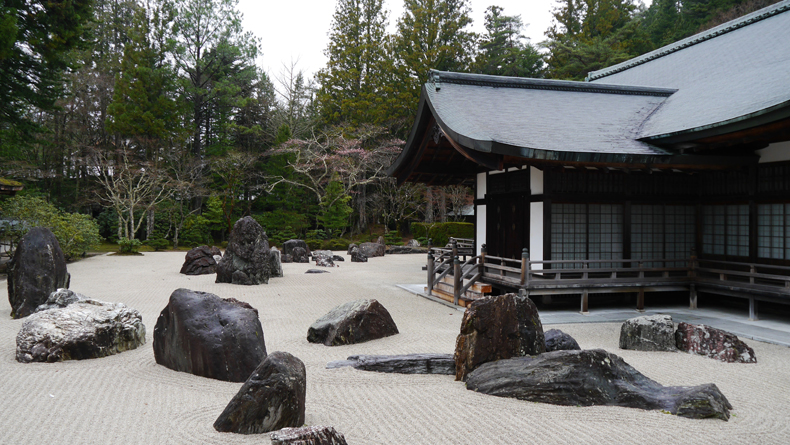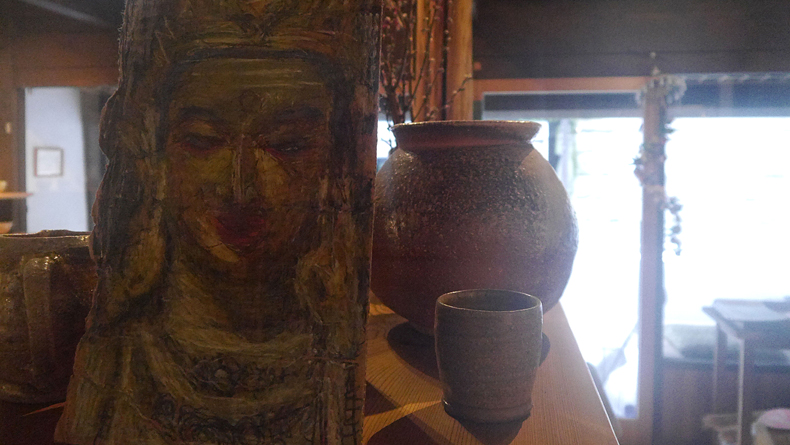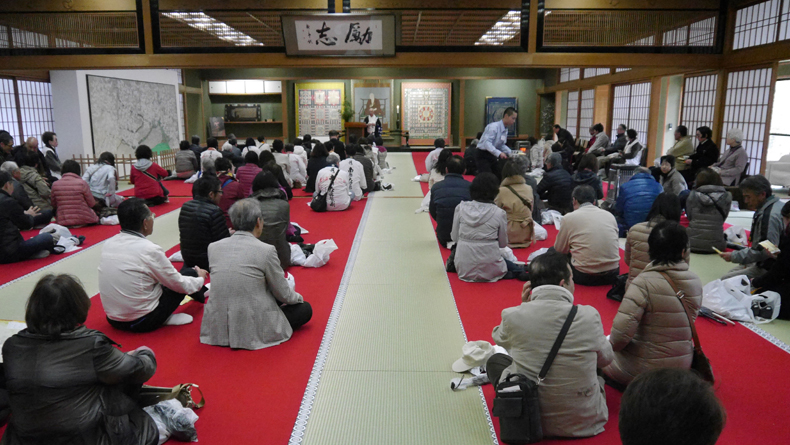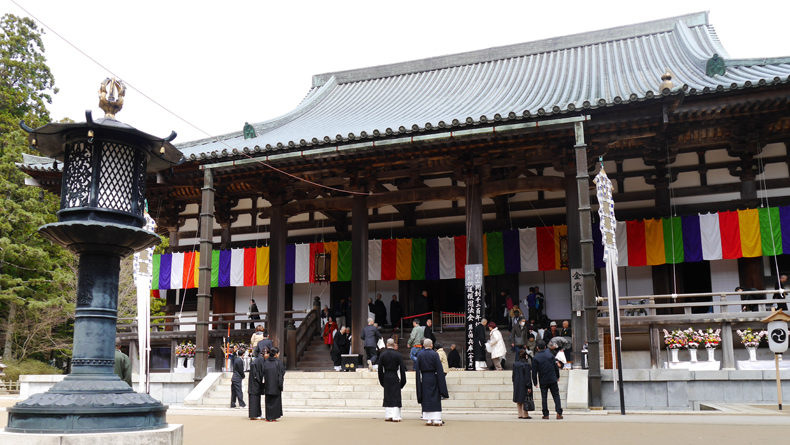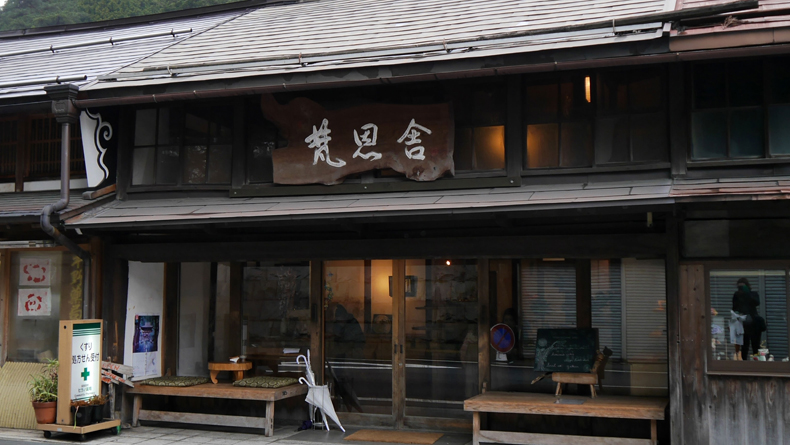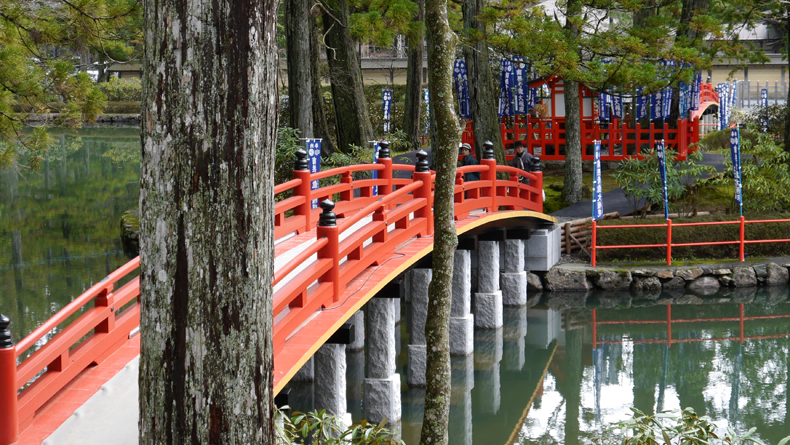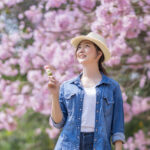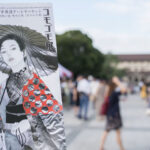Serene Sleep: Stay a Night in a Koyasan Temple
First appear the mist-shrouded mountains, regally rising from the horizon. Then your train races through a towering bamboo grove, each stalk the width of a fist. It is on the cable car, however, that you get your first real sense of the spiritual experience in store. As you begin to chug your way upwards, a forest of trees, standing strong and vertical in spite of the sheer face of the hill, swallow up the cabin. If (as we recommend) you arrive towards dusk, you will see the mist prowling and winding around these gravity defying trees, which loom indistinctly overhead.
This year Koyasan celebrates its 1,200th birthday, which means a whole host of elaborate services and special events to be enjoyed. It was founded by Kobo Daishi (known to his friends as Kukai), who reportedly threw his three-pronged vajra (a ceremonial tool in Buddhism) into the sky, determined to make its landing site his base for spreading the good word about Shingon Buddhism. He found it buried in a pine tree on Mount Koyasan (which still grows there) and, after making peace with the local Shinto deities, established the present monastery.
Another explanation is Koyasan’s spiritually significant topography. It is a basin 800 meters above sea level, surrounded by two concentric rims of hills, forming the shape of the lotus bloom so important to Buddhism. Now the hub of esoteric Buddhism in Japan, it attracts native pilgrims and international tourists alike. Many of these tourists come because Koyasan offers an extremely exciting opportunity: stay in a Buddhist temple (Shukubo) for the night.
Jimyo-in is a beautiful old inn, filled with elegant wooden screens, traditional ceramics and delicate statues. One of the main draws, however, are the gorgeous gardens, all designed to create peace and harmony for the guests (two traditional rock gardens, the other featuring a small pond filled with bright gold fish). Included in the cost are mountainous portions of breakfast and dinner served in your room, both of which are fully Buddhist vegan fare (Shojin-ryori); you will be amazed at how many different ways tofu can be prepared. Before or after dinner you might like to shuffle over to the traditional onsen in the slippers and yukata provided (gender segregated). The water was perfect, and the minerals yielded some surprisingly shiny and voluminous hair.
Perhaps the main attraction of a night in one of Koyasan’s temples, however, is that you can join the monks for their morning ceremony.
Blearily stumbling into the temple at 6:30 in the morning, you are greeted by the rich fullness of incense and the gleam of gold statuettes and tapestries in the steady candlelight. You are seated behind the two monks as they take their places before the shrine. Metal clashes as a counterpoint to the constant hum of their chants, which undulate and weave in and out of each other. About halfway through the ceremony you are invited to take an active part, usually by sprinkling incense from one pot to another; if you want to join in, it is best to wait for the Japanese practitioners to go first and then copy what they do.
Mind and spirit thus sated, breakfast is waiting for you back in your room, so you can feed your body too.
You won’t regret the early start, especially as it handily allows you to get to some of the major sites before the tour buses draw up packed full of faithful pilgrims in their distinctive white waistcoats.
If you fancy stumbling into a Ghibli-esque spirit world, it’s best to start your day with the cemetery on the path to Okunoin. The fewer people you encounter on this walk, the stronger the atmosphere of mystery and mystic potential, so it’s worth fighting the urge to dive back onto the futon (the buses of pilgrims will roll into the cemetery at around 10:30 a.m.).
Here the monuments and tombstones cluster around the path, and are interspersed with a parade of Buddhas, who have been carefully covered in blankets and sometimes even hand-knitted hats. You could spend hours discovering or imagining the stories for each marker, but some of the most interesting pieces are those that have gained a superstitious aspect: there’s a tiny sandstone marker for a Buddhist nun, which, legend tells, if you put your ear to the stone, allows you to hear the cries of those in hell. A statue of dark stone is almost permanently moist, supposedly because it is sweating on behalf of those who have sinned. Next to this is a well, and those who cannot see their reflection in its waters will die within three years (it’s rather sensibly kept covered). The Buddhist emphasis on the transient nature of human life is perfectly expressed by the proximity of ancient and new grave monuments, all cast into shadow by the towering trees.
At the end of this trail you’ll find the mausoleum of Kukai himself. Ascending the steps to the small complex, the first surprise is the sea of white pebbles with which you are confronted (they cannot be seen from the main path). The hall itself, Torodo, is famous for its number of beautiful lanterns, but you will most likely be tempted from lingering by the sounds of chanting coming from the veranda. Walking round to the back of the Hall of Lamps, you may encounter a monk leading pilgrims in a Buddhist hymn, whilst still more bustle around them lighting incense and candles. If you follow the route under the hall, there’s a room completely filled with lanterns and identical small statues of Buddha. You don’t need to loiter long, but it is worth investigating: shelves upon shelves of small, smiling Buddhas certainly make an impression.
If all the aromatic but ultimately throat-tickling incense has got you parched, we recommend stopping off at Komi for a cup of green tea brewed with pure Koyasan spring water on your way back into town (¥450 plus tax). The place is generally quite overrun, but you can also take away a cup of the fabulous tea.
Your next stop will probably be Kongobuji temple. This is the temple in which the affairs of all the Shingon Buddhist temples in Japan are administrated, and so is the site of many important events; you’ll often see flocks of monks entering or leaving the temple grounds, respectfully aided across the roads of this tiny, sleepy town by the zealous traffic directors. This temple is rightfully famous for its many breathtaking sliding doors, its traditional stone garden, and its tea hall; one entry ticket (¥500) covers all of these. The tea service is probably unlike any other you have experienced in Japan. It takes place in a long room lined with four Hollywood-style red carpets. A senior monk stands at the front, speaking to the faithful as they sip their green tea and nibble on their sweet crackers.
At this point, your stomach is probably realizing that sweet crackers and spiritual enlightenment aren’t enough to fuel the afternoon of sightseeing ahead, so we suggest stopping for lunch a Bon o Shya. This restaurant-cum-art gallery is run by Japanese Yokohama-san and French Veronique, along with their three-year-old son. They serve up vegetarian and vegan fare, as well as delicious cakes, such as a tofu cheesecake that definitely justifies a second helping. A cake and tea set will set you back a measly ¥550, and comes on earthenware so elegant and minimalist, it would make a Dane weep. Special allergies can also be catered for, if you drop them a line beforehand.
The third big sight of Koyasan is the monastic complex, Garan. This is the site where the original buildings of Koyasan were constructed, and the very earliest of these is the one that strikes you first on the short tree-lined path to the complex, the Great Stupa (Daito). Known as the “fundamental great stupa,” it cuts an impressive figure at 48.5 meters in height and 23.5 meters in width, painted in a vivid scarlet. The current structure is a reconstruction from 1937, since the Koyasan temples seem to have had a nasty tendency to burn down before the introduction of fire hydrants to the town, but it is no less impressive, both inside and out. The interior is supported by 16 huge columns painted brightly with images of the 16 saints of the ideal world. Golden religious images languish in the center of these, snatching the breath of those entering with their calm stares.
In the middle of the complex is the Kondo, where you will most likely be lucky enough to catch one of the regularly held grand Buddhist ceremonies. Two rows of monks dressed in opulent gold and orange face each other, chanting together as a senior monk sits between them to lead the service. This is where Kobodaishi originally gave religious talks, making it a particularly unique location at which to hear a modern service.
You might also want to explore the Shinto temple that still remains in the complex, a beautiful old building in itself, and a perfect expression of the Japanese respect for other religions.
If you have some time left over, here is our take on the best of the rest:
The Zennyo Ryuo Shrine on the Lotus Pond combines two of the most relaxing things known to man: still water and Buddhist shrines. This pretty little island is reached by one of the two bright red bridges adjacent to the Garan complex, and is a lovely extra jaunt to add on to your explorations of the Kondo and Great Stupa.
The Burmese temple which you will pass coming from the cemetery to Kongobuji has a very interesting basement. Feeling slightly like Indiana Jones in The Last Crusade as he faces the glass bridge, you take tentative steps into the darkness, your eyes fighting to adjust; you will find yourself infused with a sense of wonder as you discover the religious images in their individual dimly lit alcoves.
The main sites of Koyasan can certainly be covered on foot in a day, making this the perfect weekend getaway. It’s certainly not an unknown retreat, but that doesn’t make it any the less unique or revitalizing. It is truly a spiritual reboot for those growing jaded with the hectic modern lifestyle, or for those who simply want to explore something vastly different from their everyday experiences.
The Deets
Getting there: Koyasan is best accessed from Osaka, but even from there it requires a few rides on local trains and a cable car. To map out a route that works best for you, simply input your departure station and type Koyasan as the destination on this website.
Getting around: The area can easily be explored on foot and by using the local bus network, but bikes (¥400 for an hour, and ¥100 for every additional half hour) and audio guides (¥500 each) can be rented from the Koyasan Shukubo Association central office (open 8:30 a.m.–4:30 p.m., tel: 0736-56-2616, nearest bus stop: Senjuinbashi).
Where to stay: There are 53 temples offering lodging in Koyasan, from the lavish to those that offer a more back-to-basics experience. Some of these, including Jimyo-in, can be booked through JapaniCan (prices vary).

